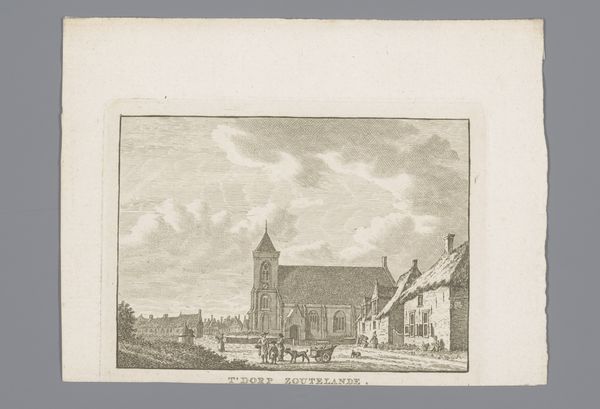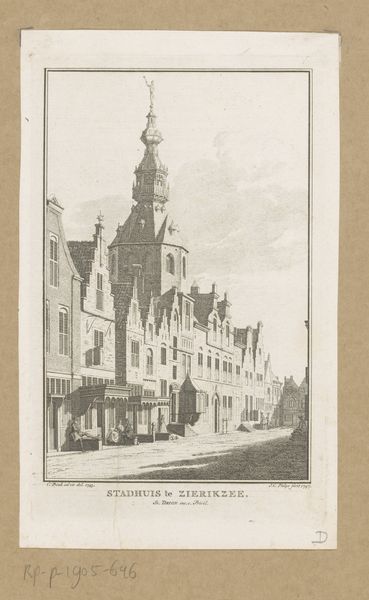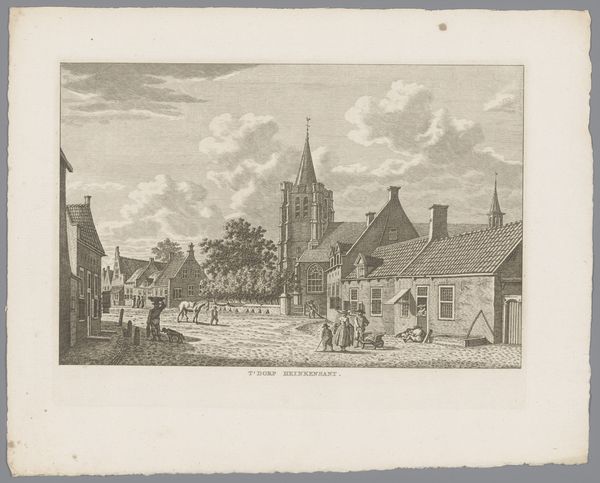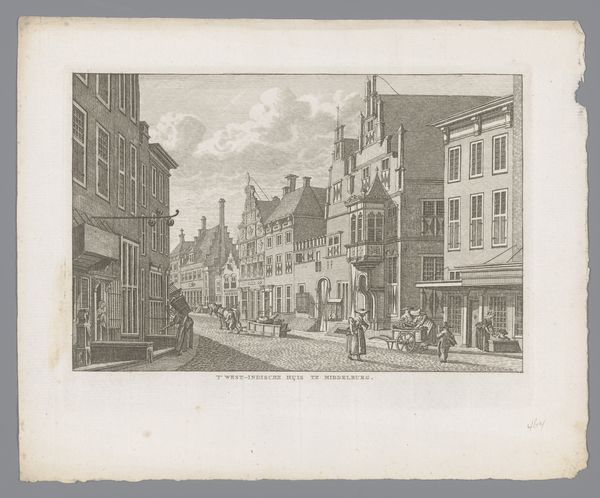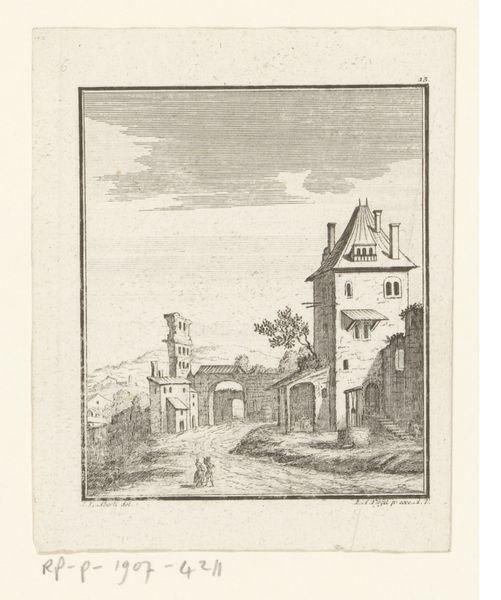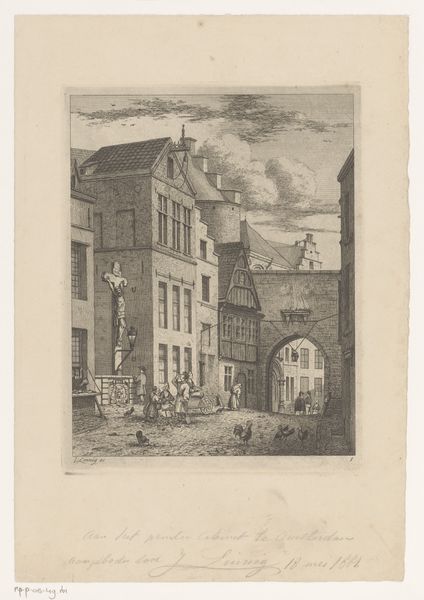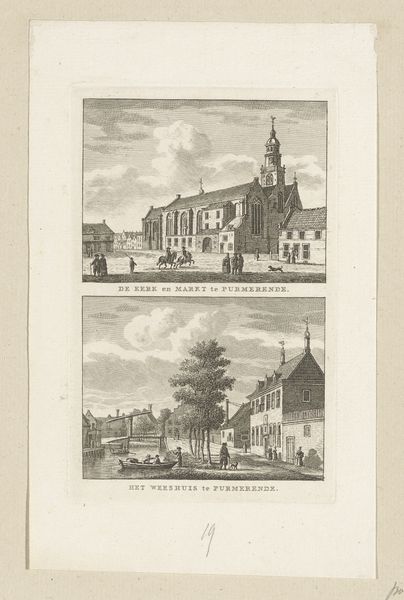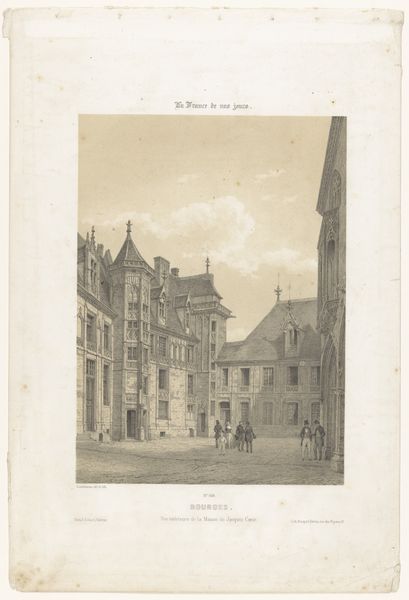
drawing, print, paper, pencil, engraving
#
drawing
#
baroque
#
dutch-golden-age
# print
#
paper
#
pencil
#
cityscape
#
engraving
Dimensions: height 176 mm, width 110 mm
Copyright: Rijks Museum: Open Domain
Curator: The atmosphere is heavy, almost solemn. It’s an interesting blend of detail and ethereality. Editor: Indeed. We are looking at “Gezicht op de toren van de Grote Kerk te Veere, 1743” or “View of the tower of the Great Church at Veere,” created by Jan Caspar Philips, an engraving printed in 1747. It's rendered with delicate lines on paper using pencil and engraving. Curator: Philips captures a moment in time, the Baroque style evident in the composition and the subject. Yet, there's a certain timeless quality too. One can sense a community, bound by something bigger, the imposing church—perhaps the rigid doctrines of the era as well? Editor: I agree; it evokes a strong sense of place. The architectural precision shows Veere, a town whose prosperity was very much linked to its maritime trade at the time. Philips’ work then must be considered within a political context of rising and waning empires reflected in the minutiae of daily life. Curator: This almost photo-realistic technique also begs questions about access and representation in a mercantile context. Who had the time to pose in this “candid” street view? This suggests the work speaks, however inadvertently, about economic status and privilege in the 18th century. Editor: Certainly. The church dominates the scene. As such, one cannot avoid questioning the Church's social power and its influence on citizens, as well as consider how these buildings shaped urban identities, then and now. Also, you should know that images of city life boosted urban economies during that period. Curator: How the cityscape interacts with daily lives can’t be overlooked. Those figures strolling hint at stories, desires, or even struggles untold in conventional historical narratives. What does it mean, say, to capture these men’s aspirations but exclude many others? Editor: An important question, indeed! Jan Caspar Philips’ work allows us to explore social structures reflected in Dutch urban spaces. It's as much about what is shown, and the precision thereof, as it is about those lingering unseen. Curator: It definitely presents many possibilities for discussion regarding our cultural inheritance.
Comments
No comments
Be the first to comment and join the conversation on the ultimate creative platform.
